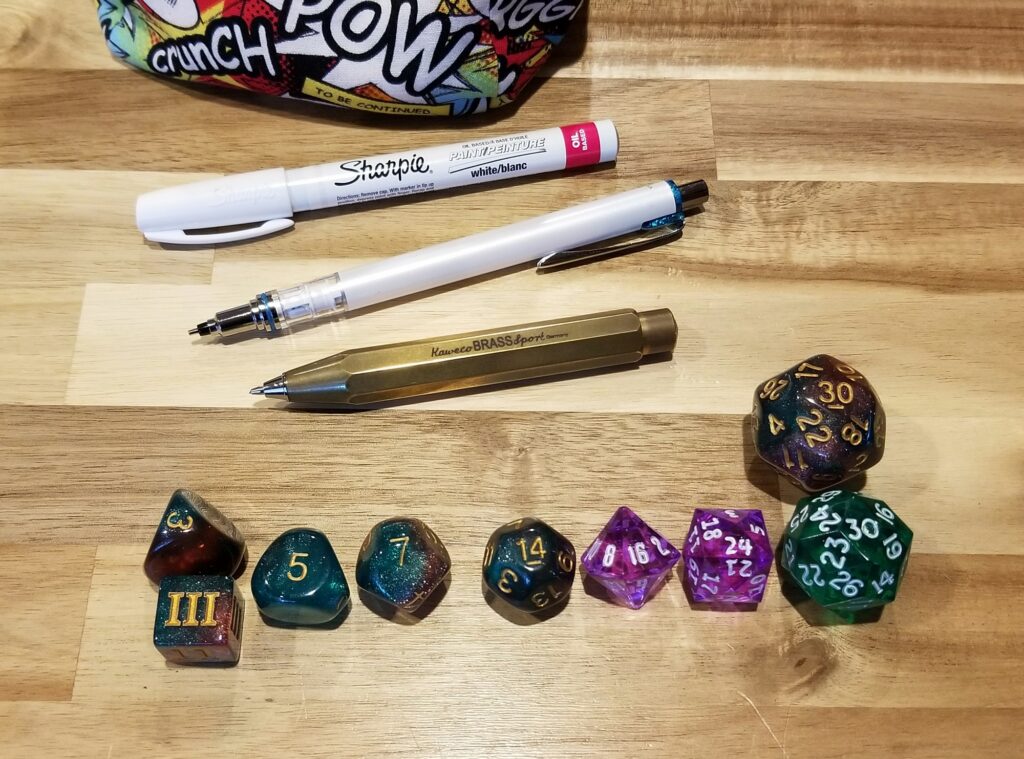DCC dice, inking, and pencils
My beloved Kaweco Sport mechanical pencil, which I’ve used in every in-person game session since 2015, finally gave out. Its plastic internals stopped working; all the brass and other metal parts are perfect. I’m hoping to have it repaired, but haven’t had much luck with their US repair partner so far. The Kuro Toga Advance […]
DCC dice, inking, and pencils Read More »

